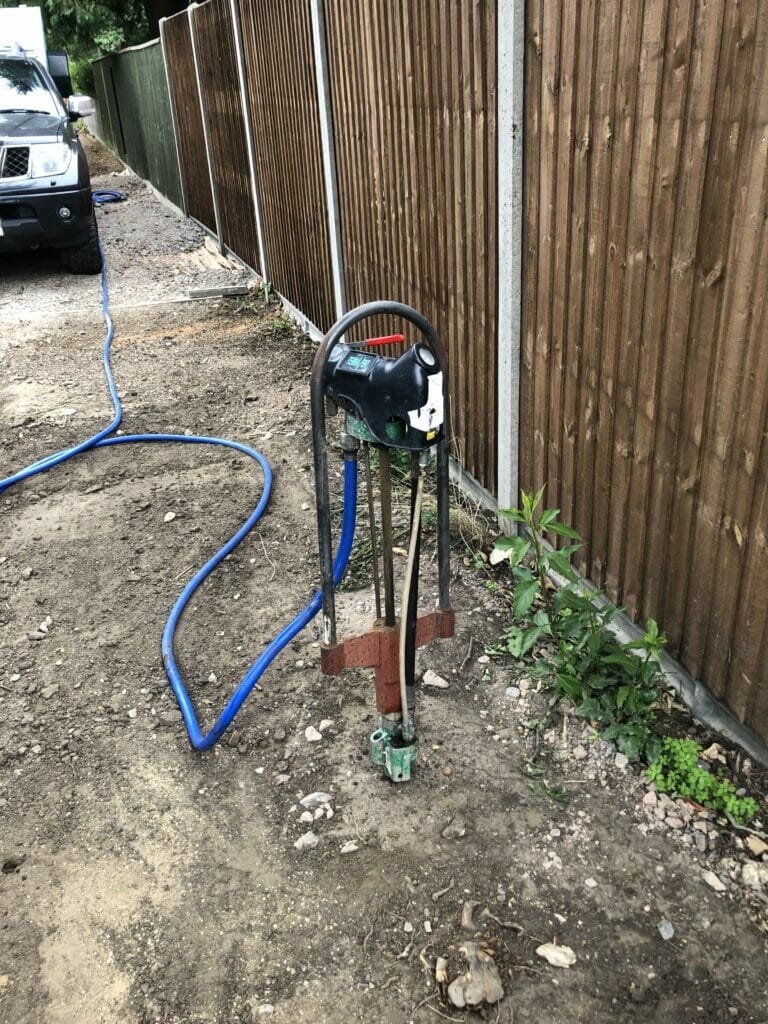In the tree care world, we have a limited number of machines that actually have a pro-active benefit on a trees overall health.
While chainsaw, chippers and transit vans are the common “tree surgeons” go to, there are other actually beneficial alternatives that don’t rely on cutting bits off.
The Terravent is one, and I’ve written about it before here, with the air spade, and BITE system others. There are a few more, but the numbers are limited and I’m sticking to kit I’ve used or owned for this post.
Unlike most companies, we’re in a lucky position. We have both!
Plant Health Care, or more specifically Tree care, shouldn’t be a one size fits all. Each method has it’s plus and minuses, and just as importantly in the wrong hands can do more harm than good.
I’ll start with the air spade.

There’s no denying it is a wonderful multi purpose tool. Want to find roots, easy peasey, point it at the ground, pull the trigger and off you go, soil starts moving. Want to till the soil without damaging roots, again point it at the soil, pull the trigger and you can fluff the surface up without a problem. Unless the soils dry and sandy, then that loose soil being pushed along with a lot of air, can be turned into a sand blaster, stripping the protective layers off the roots and allowing pathways for fungal spores and other nasty’s to get in. Then there’s the damage that can be done to beneficial mycorrhizae by turning over the whole rooting area. Not a method we carry out, but I’ve seen plenty of companies that do. And finally, in some circumstances the compaction is too deep and all you’re doing is fluffing the surface up while the pan sits beneath and once the ground becomes wet, it can become a big squidgy mess.
On the plus side, you can mix good organic material into the soil with minimal difficulty. You can vertical mulch, without causing lots of root damage, and it can help provide a much better environment for tree roots to grow in. With enough other kit to do the lifting you can even move trees without having to cause huge volumes of root severance.
Now the Terravent.

Bang the probe into the ground, pull the lever, and off you go. Couldn’t be easier. Until you hit a root, or something slightly nastier if you haven’t swept the area with a scanner, the things you’re meant to be helping protect, causing unseen damage and meaning you have to go find another spot. You can’t incorporate matter with it, we do fill the probe holes with a bio-char mix, but the volume is minimal. And if you’re not careful you can run out of air, or nitrogen in this case, but that’s only if you’re a dipstick and don’t check the levels before you go out.
On the plus side, it is quick and easy to use, I can push the probe in and “pulse” the ground meaning it fractures compaction at different depths, I don’t have to remove all the your grass to use the machine, and the liquid amendments can be tailored to each site, rather than having to use a one size fits all mix.
Hopefully that answers some questions.
As an end user I don’t have a preference for either machine. I simply select the tool for the job and don’t have to push one over the other because its all we’ve got to use.